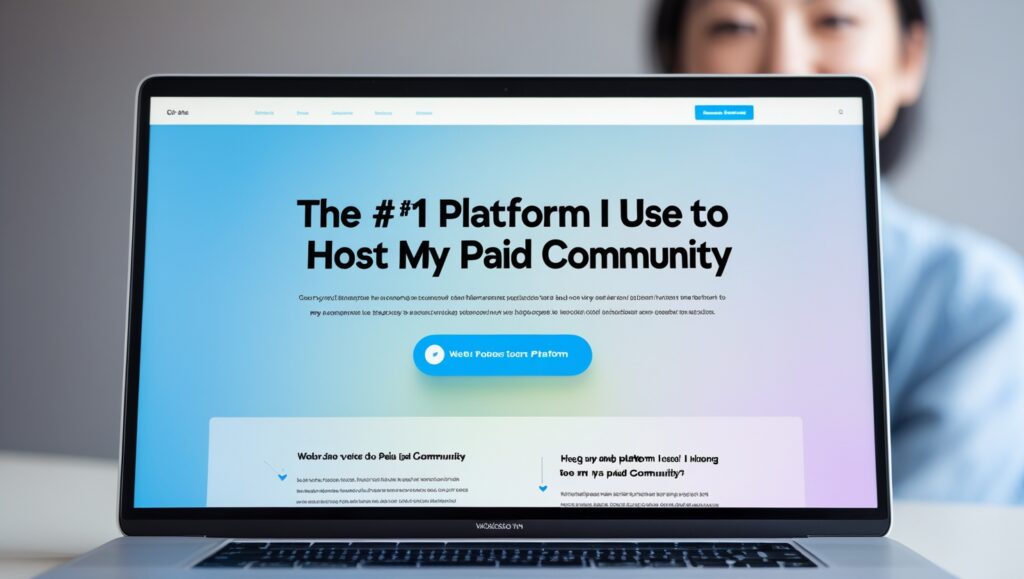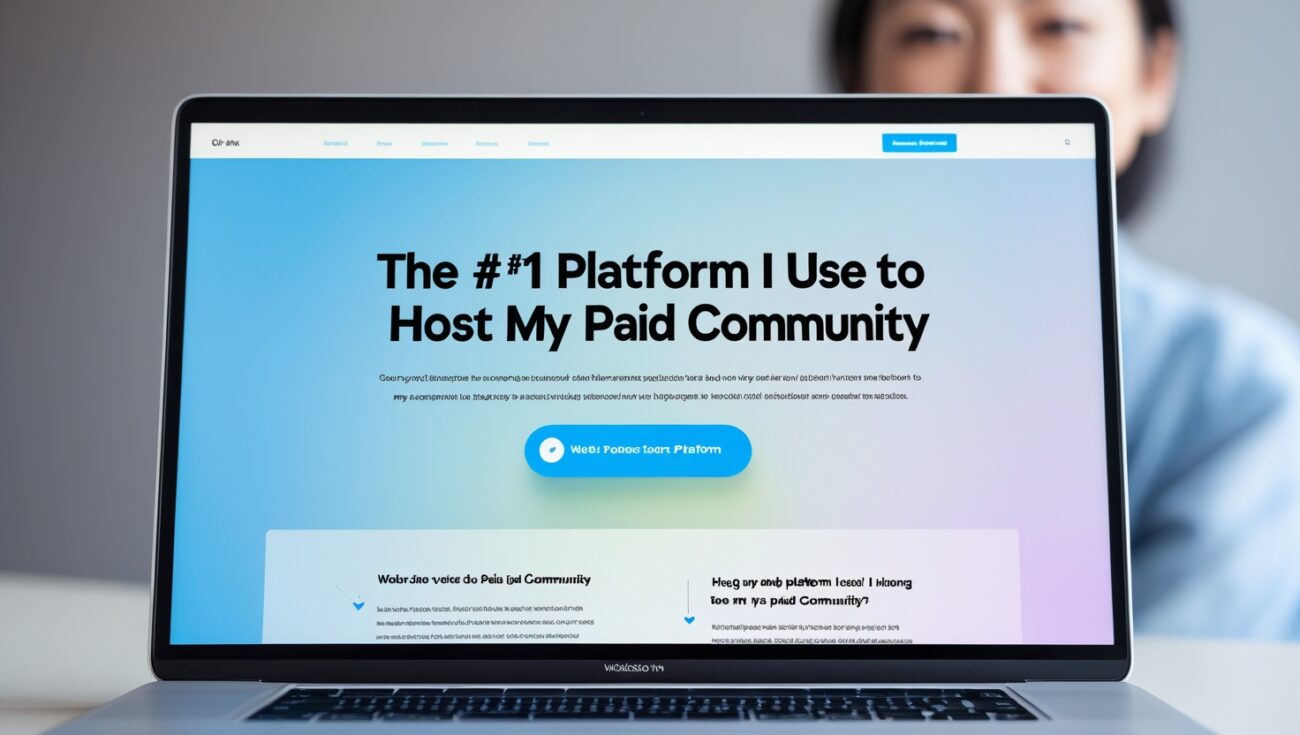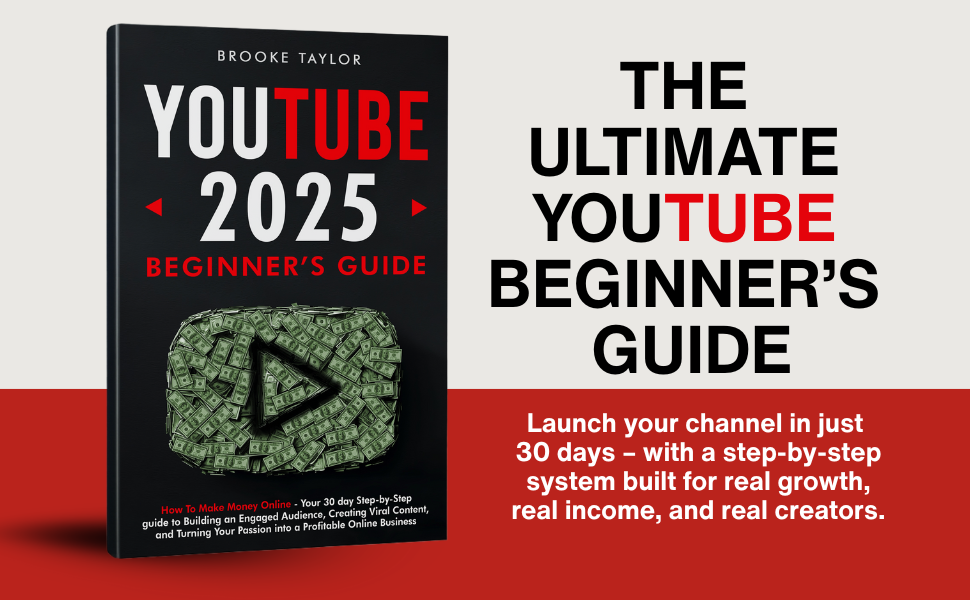The #1 Platform I Use to Host My Paid Community
When I first set out to build a paid online community, I tried everything — Facebook Groups, Discord, private Slack channels, even building a custom WordPress site with plugins. Nothing really worked the way I needed. Either it was too messy, too clunky, or just not built to help me grow a real business. That’s when I found Skool — and honestly, it’s been the best decision I’ve made for my community.
I’m not being dramatic when I say this: Skool is the #1 platform I use to host my paid community, and I’m going to explain exactly why.

Table of Contents
I Was Tired of Low Engagement and Platform Limitations
Facebook Groups used to be the go-to option. But let’s be real — algorithm changes, constant distractions, and lack of structure make them terrible for serious communities. People would miss important updates, get distracted by memes, and rarely engage beyond likes.
Discord felt too chaotic. Slack felt too corporate. I needed something built for course creators, coaches, and membership owners who want to create real value and real connections.
Why I Chose Skool Over Every Other Platform
Here’s what made the difference for me:
- All-in-one solution: Skool combines community, course hosting, calendar, payments, and gamification — all in one clean interface.
- Flat pricing: One simple $99/month price. No nickel-and-diming. No extra charges for more users or features.
- Stripe integration: I get paid directly. No more third-party checkout pages or invoicing headaches.
- Gamified community: Members engage more when they earn points for participation. It feels like fun, not a chore.
- Clean design: No distractions, no spam. Just pure value inside my group.
I tried over 10 different platforms before sticking with Skool. None gave me the control and simplicity I needed to actually grow and monetize my community.
How I Use Skool to Deliver Value
Once someone joins my paid group, they get instant access to:
- The community feed where I post updates, wins, and resources.
- A classroom section where I upload all my trainings, replays, and bonus content.
- A calendar tab that shows our weekly live calls or events.
- Direct interaction with me and the rest of the members.
It feels like a mix of coaching, mentorship, and premium membership — all in one. I never had that level of structure when I was running things on Facebook or Slack.
Why Skool Members Stick Around Longer
One thing I didn’t expect? The retention rate. Because members can learn, engage, and track progress all inside one space — they stay. They level up. They tell their friends.
With Facebook, people ghosted after a week. With Skool, I see members logging in daily, helping others, asking questions, and actually using the content I put out.
This is why I believe Skool isn’t just a community tool — it’s a business asset.
My Skool Group Pays for Itself Every Month
Within the first two weeks of launching my Skool group, I had already made back the $99 monthly fee. And since then, it’s continued to grow organically.
I didn’t have to build a website. I didn’t need a funnel. I just created value, added my Stripe payment link, and invited people in.
Click here to start your own paid community with Skool
When I first heard about Skool, I thought it was just another overhyped platform. But once I actually logged in and played around with it, I realized it solved almost every problem I had with my previous setup. It’s clean, intuitive, and built for growth.
I used to stress about linking multiple tools together — Thinkific for courses, Facebook for groups, Stripe for payments, Calendly for events, and Zoom for calls. With Skool, I finally got everything under one roof. That simplicity alone saved me hours every week.
One of my biggest wins came from using the classroom feature to organize my lessons. I created modules, uploaded my video trainings, and structured the content in a way that was easy to follow. Now when people join, they know exactly where to start — no confusion.
The built-in calendar also changed the game for me. I just drop in my weekly Zoom links, and members get automatic reminders. This small feature helped me increase live attendance — and it made my community feel more alive and connected.
I’ve also seen a difference in the conversations happening inside my group. People ask deeper questions, share wins, and offer genuine advice. That’s because the environment feels safe and purposeful. Facebook groups never gave me that vibe.
When someone joins my community now, they don’t feel like just another email subscriber. They feel like a member — part of something real. That shift in perception helped me increase the lifetime value of each customer significantly.
I also noticed that onboarding became much easier. With Skool, new members are guided automatically through the first steps. I pinned a welcome post, linked my intro video, and added a quick-start guide in the classroom. No one gets lost.
Another benefit? I can manage everything from my phone. Whether I’m posting updates, replying to comments, or uploading new content, Skool’s mobile interface makes it easy to stay connected without being glued to my laptop.
And let’s talk about revenue — because at the end of the day, we’re building communities to serve and sustain us. My paid group on Skool now brings in consistent monthly income, and I haven’t had to spend a dime on ads to keep it growing.
Plus, every time I recommend Skool to someone and they sign up, I earn affiliate commissions. It’s a tool I truly believe in, so sharing it is effortless. The affiliate program has become a solid second stream of income for me.
There’s no doubt in my mind that Skool is the future of community platforms. It removes the clutter, gives creators real control, and actually encourages people to participate. That’s rare in this noisy online world.
Click here to build your paid community on Skool today — it’s the tool I use every day, and I wouldn’t trade it for anything else.






